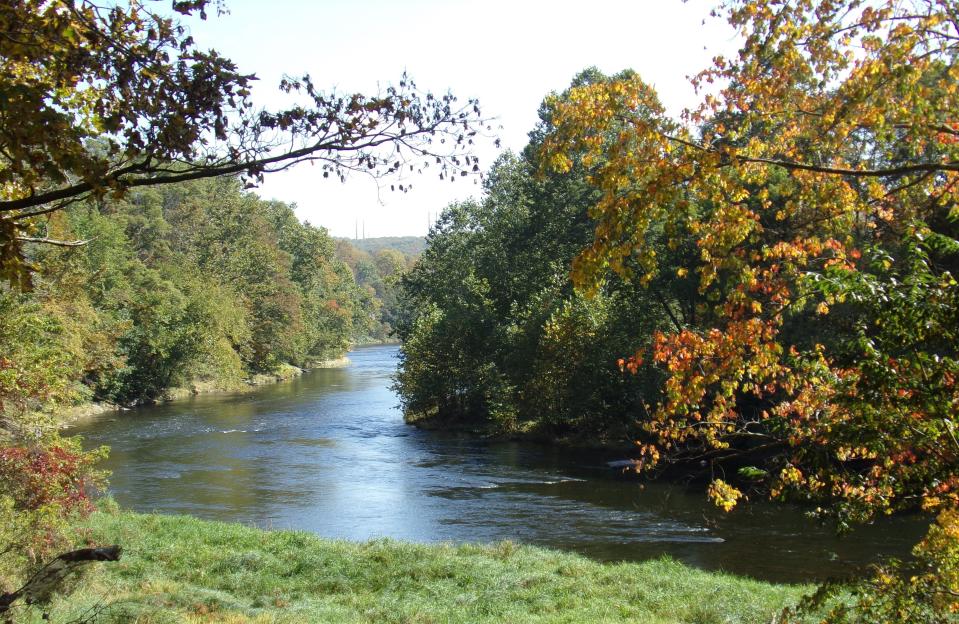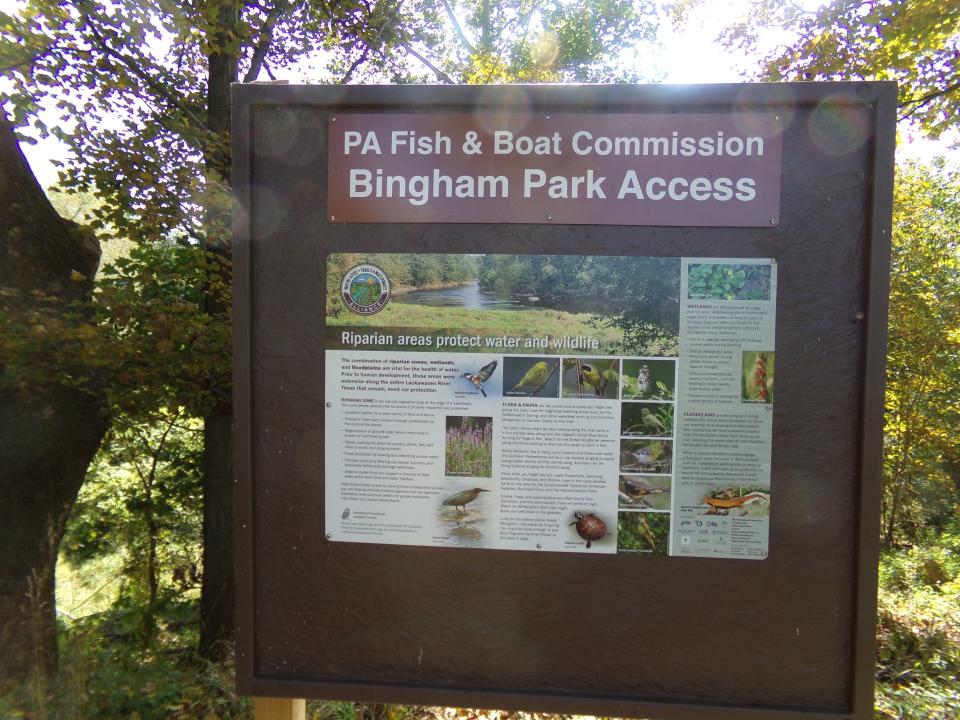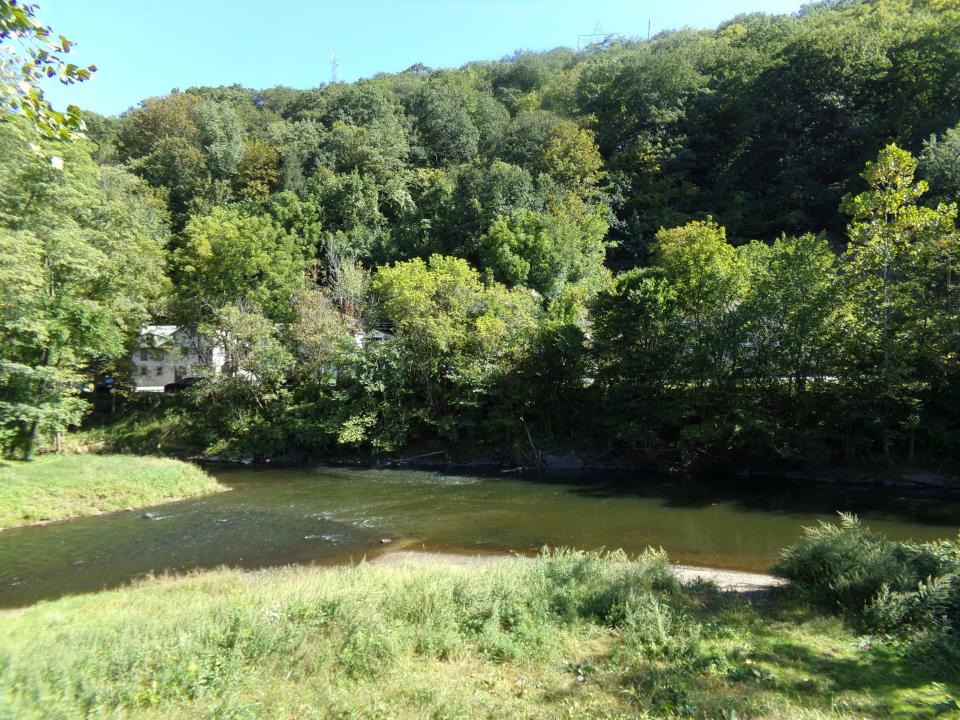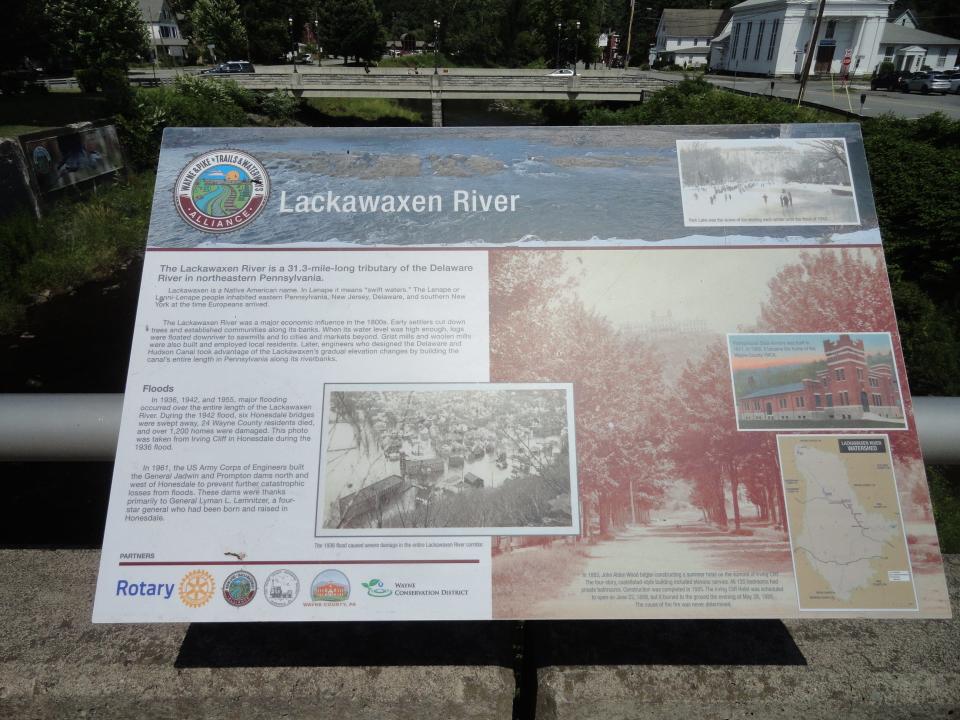Wild & Scenic? Here's what it would take for Lackawaxen River to get federal designation
The Lackawaxen River Conservancy is hoping to achieve a federal Wild & Scenic designation for its namesake river shared by Wayne and Pike counties.
Members of the Upper Delaware Council (UDC), speaking from experience, stressed the importance of the Conservancy receiving the backing of the local population.
The 31.3-mile Lackawaxen River is a major tributary of the Delaware River.
Christine Foland, vice president of the non-profit Conservancy, addressed the UDC Water Use/Resource Committee meeting on Sept. 19. The full council was invited to the meeting at the UDC headquarters in Narrowsburg, New York.
"We are doing this for a very simple reason: We love the river," Foland said. "And I think that is something you can all relate to." She said they desire to see the river protected and preserved perpetually, which the Wild & Scenic River designation intends to accomplish.

The UDC, a nonprofit coalition of local, state, and federal governments and agencies, has shepherded the federal River Management Plan (RMP) for the Upper Delaware since 1988. The National Park Service (NPS) is a non-voting partner.
Foland said she hopes the UDC can advise the Conservancy. Congress designated the 73.4-mile corridor known as the Upper Delaware Scenic & Recreational River as part of the National Wild & Scenic Rivers System in 1978. The NPS arrived here in 1980, with jurisdiction limited to the river and the small amount of land acreage it controls.
"We believe the Lackawaxen River's beauty, unspoiled charm and special character make it eminently worthy to be designated a Wild and Scenic River," Foland said.
What is necessary for this designation?
She pointed out how the Lackawaxen meets the criteria for this federal label: It is free-flowing without dams or impoundments; it is considered to have "outstanding remarkable values that are rare or exemplary," including historic, cultural, natural and recreational values.
For a river to be designated, a local study committee is necessary, including representation by the NPS. The Conservancy would then need to show ample documentation of local support before the study can be accepted by Congress. To do that, Foland said, Rep. Matt Cartwright and either Sen. John Fetterman or Sen. Bob Casey must agree to sponsor a bill in Congress.
To help citizens show their support, Foland said they can use the sample letter on the Conservancy website.

The study must verify the river's free-flowing character and at least one "outstandingly remarkable value."
For the river to be eligible, the Conservancy must provide an RMP. "I understand this is heavy lifting," she said.
Foland showed an example of a RMP that she found submitted for the Musconetcong River, a 42.5-mile tributary to the Delaware River in New Jersey. The document is 78 pages. "This will require a great deal of work," she said.
What are the benefits of getting this designation? Foland listed:
National recognition and prestige
Economic boost
Local control of the river through a locally appointed council and RMP
Technical support from the Park Service for the RMP and projects
Protection from dams or other impoundments that could adversely affect the Lackawaxen
Some examples of outstanding remarkable values on the Lackawaxen, Foland said, are the Delaware and Hudson Canal which paralleled the river; the Stourbridge Railroad; the Dorflinger Factory Museum in White Mills; author Zane Grey's home and museum in the village of Lackawaxen; and its popular recreational assets of fishing, kayaking and canoeing. More may be suggested by citizens or organizations, she added.
Once a Lackawaxen River Council is organized, she stated, they would implement the RMP, coordinate among stakeholders and use funds from the Park Service and local organizations to address river issues.
Foland said that the Lackawaxen's RMP would not overlap with the Upper Delaware corridor, which shares the last portion of the Lackawaxen River leading to its confluence with the Delaware.

Public support is crucial
Al Henry, UDC representative for Berlin Township as well as a retired Park Service ranger who worked on the Upper Delaware, underscored the importance of public input and support.
The Lackawaxen is shared by multiple municipalities, Henry noted. "The Wild and Scenic River Act also has some... land use restrictions. There are an awful lot of things for the public to be aware of."
Henry referred to when the Upper Delaware segment was proposed for this designation. "It was a firestorm," he said. "One of the first things your group should do is to publicize for it. Get together with landowners along that river to get a consensus, because I don't care how many congressmen or senator you have, if the landowners who own a vast majority of this property which is privately owned, if they don't like the idea, you are dead in the water."
"You are absolutely right," Foland said. "Part of the study process will be meetings and publications... I am aware that getting support is essential or the designation won't happen."
Henry suggested that the Conservancy read the Upper Delaware RMP available on the UDC website.
"Not to scare you off, but that plan took 17 drafts and approximately 10 years before it was hammered out," UDC Director Laurie Ramie added. The plan is 197 pages long.

The Wild and Scenic Rivers System website states that each river in the National System is administered with the goal of protecting and enhancing the values that caused it to be designated.
"Designation neither prohibits development nor gives the federal government control over private property. Recreation, agricultural practices, residential development, and other uses may continue," it states. "Protection of the river is provided through voluntary stewardship by landowners and river users and through regulation and programs of federal, state, local, or tribal governments. In most cases not all land within boundaries is, or will be, publicly owned, and the Act limits how much land the federal government is allowed to acquire from willing sellers. Visitors to these rivers are cautioned to be aware of and respect private property rights."
Since the Wild and Scenic Rivers Act was passed in 1968, through 2022, the National System has protected 13,467 miles of 228 rivers in 41 states and Puerto Rico. This is less than one half of one percent of the nation's rivers.
The closest Wild and Scenic Rivers to Wayne, Pike and Monroe counties are the Upper Delaware Scenic & Recreational River and the Mid-Delaware within the Delaware Water Gap National Recreation Area.
For more information, visit:
Lackawaxen River Conservancy, lackawaxenriver.org
Wild and Scenic Rivers System: rivers.gov
The Upper Delaware Council: upperdelawarecouncil.org
Lackawaxen River Trails lackawaxenrivertrails.org
Peter Becker has worked at the Tri-County Independent or its predecessor publications since 1994. Reach him at pbecker@tricountyindependent.com or 570-253-3055 ext. 1588.
This article originally appeared on Tri-County Independent: Lackawaxen River Conservancy seeks Wild & Scenic label for river

